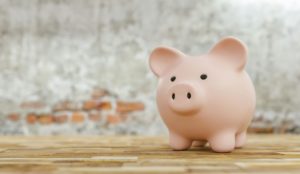First Time Home Buyer
Are you ready to buy your first home in British Columbia? Owning property is both exciting and nerve-wracking, and comes with a range of considerations. To help you get started, please pay attention to the following home-buying guide.

Saving for the Down Payment
How much do you need to save for a down payment? In Canada, most down payments range from 5% to 20% of the home purchase price, with some loan programs requiring up to 35%. For homes valued at $500,000 or less, the minimum down payment is 5%. For homes priced between $500,000 and $999,999, the down payment is 5% of the first $500,000 plus 10% of the remaining amount. For example, if the home costs $900,000, you need to save 5% of the first $500,000 ($25,000) and 10% of the remaining $400,000 ($40,000), totaling $65,000.
If you save a 20% down payment, you will avoid paying the Canadian Mortgage and Housing Corporation (CMHC) mortgage default insurance. This insurance costs between 2.8% and 4.0% of your mortgage amount. It’s a significant expense that you can avoid by making a down payment of 20% or more.
Your Closing Costs
In addition to the down payment, you’ll need to save for closing costs. These costs range from 1.5% to 4% of the home purchase price and must be paid upfront. They include:
- Property transfer tax
- Legal fees
- Title insurance
- Mortgage default insurance (if your down payment is less than 20%)
- Goods and Services Tax (GST) on the purchase price (if you are buying a newly built home)
- Home inspection (optional)
For more details, please Click
Check and Improve Your Credit Score
In Canada, every adult's credit score ranges from 300 to 900. Your credit score (also known as your credit rating) is essentially an assessment of your creditworthiness and financial stability. Banks and credit unions use your credit score to evaluate the risk of lending you money for significant purchases. The higher your credit score, the better your chances of securing a mortgage loan with a lower interest rate.
For more details, please Click

Organize Your Documents
Gather all of the following financial documents into a folder on your computer:
Required Documents:
-
- Government-issued photo ID (driver's license, passport)
- Proof of employment and income (pay stubs, T4 forms, T1 General/CRA Notices of Assessment, Bank statements)
- Proof of down payment and its source (e.g., savings accounts, Registered Retirement Savings Plans (RRSPs), Sales of existing property, gifts). If a family member is helping with the down payment, you’ll need a gift letter from them confirming the use of the funds and that they do not need to be repaid.
- Other assets
- Your debts (e.g., credit card balances, car loans or leases, credit lines, student loans, or spousal/child support obligations)
Get a Mortgage Pre-Approval
Discuss with a bank or mortgage broker to determine how much you can afford and obtain a mortgage pre-approval.
Step 1: Use a mortgage calculator to determine the amount you can borrow and your mortgage repayment amounts. You can download the "My Mortgage Toolbox" app.
Step 2: Obtain a mortgage pre-approval through a mortgage broker or directly from your chosen bank. Although not mandatory, a mortgage pre-approval can help you:
- Understand the maximum mortgage amount you can apply for
- Accurately estimate your mortgage repayment amounts
- Lock in an interest rate for up to 120 days
- Gain priority when purchasing a home
- Take advantage of first-time homebuyer programs
To help you save money, keep an eye out for first-time homebuyer Benefits in Canada, such as:
- RRSP Home Buyers’ Plan
- First-Time Home Buyers’ Tax Credit (FTHB)
For details, review: Government First-Time Home Buyer and Tax Reduction Programs.